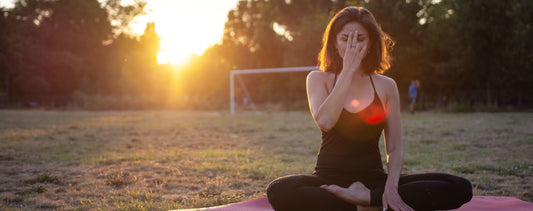Who says you have to head off to Bora Bora on a weeklong yoga retreat to disconnect from stress and reconnect to your spirit? A home yoga retreat can provide nearly all the benefits of a destination retreat, without the cost and headache of travel. In fact, creating a yoga retreat at home is a novel way to revitalize your body, renew your mind, and refresh your spirit. The following 12 steps will help you set up your personal retreat.
By integrating these principles, you may decide that a home yoga retreat is the best retreat you have ever experienced. Now, what are you waiting for? Go pencil in your upcoming retreat.
1. Declutter Your Space
Clutter steals your attention, energy, and time. Before you can transform your home into a personal retreat setting, you will need to tidy up. Wash laundry, pay bills, put some clean sheets on the bed, and light a candle. Sprucing up your space liberates energy and frees your attention for more meaningful projects.2. Clear Your Schedule
The simple thought that you will have “just one commitment” during your retreat time has been the tragic ending to many a home retreat. Wipe the slate clean. Make sure the children have somewhere to stay, your spouse is retreating with you, your friends know that you will be unavailable, and your boss knows not to call. Remember to alert family members like mom and dad if they might worry about an unreturned call.3. Plan Your Meals
Alexander Graham Bell said it best when he declared, “Before anything else, preparation is the key to success.” That sentiment could not be more true when planning meals for your home retreat. Consider your goals when planning meals. Do you want to experiment with raw vegetable smoothies or juicing? Or would you prefer warm, nourishing foods? Decide ahead of time what you will eat for each meal and then head to the grocery store with list in hand.4. Disconnect from Devices
One of the most amazing things happens when you disconnect from your phone, tablet, computer, and television—the pace of life seems to slow down exponentially. When you are not forced to be on call for the world, you can begin to be on call for your soul. Disconnecting from electronics provides space to explore the call of the spirit, the messages of the soul, and the communication of your inner guide.5. Practice Silence for a Portion Your Day
Words are the sacred power behind all creation. Yet words are so common that most people forget their sacred nature. They forget that what flows from the lips give form to creation. You are constantly creating through your words. That is what makes them sacred. Spend a period of each day in silence so you can reconnect with the powerful influence that your words have over your life. Then, when you do speak, you will be more conscious of the creative power that flows from your mouth.6. Practice Yoga—Morning and Night
No yoga retreat would be complete without a hefty dose of yoga. That doesn’t mean you have to practice two Vinyasa sequences each day. Be playful. Mix it up. Explore a less familiar style of yoga. If you normally do a Vinyasa flow, try a restorative practice. If you always practice indoors, take your mat outside and practice in the open air. In one of your daily yoga sessions try to do something different. Investigate how variations in speed, postures, location, temperature, and ambiance affect your practice.7. Meditate
Meditation takes you out of the conditioned mind into the unconditioned mind. The unconditioned mind is that part of you which is free from the roles, responsibilities, experiences, and cultural expectations that infuse your normal awareness. When you can slip beyond these conditioned aspects of yourself, you are left with your real self. In the experience of your true self you can discover peace, joy, and purpose that may have eluded the conditioned self.8. Journal
Journaling is a method of processing the deeper aspects of your nature. It is a means of exploring your unconditioned self. Through journaling, you may uncover parts of your past that need to be healed, present experiences that are not reflective of your highest self, and intentions for your future that need to be voiced. Commit to journaling for at least 15 minutes a day. If you are not sure where to begin, ask yourself the soul questions:- Who am I?
- What do I want?
- What is my dharma (purpose)?
- What am I grateful for?
9. Pamper Yourself
A retreat should be nourishing to you on every level. Take time to pamper your body. It is, after all, the home of the soul. Take a warm bath, give yourself a facial, or get a massage. Savor the experience of nurturing the body.10. Diffuse Essential Oils
Essential oils can be applied topically or diffused to create a spa experience. Take time to deeply breathe in the oils that meet your unique needs and goals. Perhaps you want to uplift your spirit with a citrus or floral blend. Maybe you need to release difficult emotions with sacred frankincense. Or perhaps you just want to unwind with some lavender oil. Whatever your goal, nature has a support system for you. Make sure to tap into its healing potential.11. Read Something Inspiring
A retreat is a time to let go of things that no longer serve you in order to make room for the things that uplift you. Make sure to fill up with life-enhancing, supportive thoughts by selecting a book or two before your retreat (remember you’re keeping the computer turned off). Then snuggle up with a warm cup of tea, a blanket, and a captivating read. Enjoy the time to give back to yourself.12. Get Extra Rest
As your body and mind purge toxins, you may find that you need some extra rest. Take time to honor your body’s needs and rest. Go to bed an hour or two earlier than normal. You may find that the extra rest wipes years off your face. Beauty sleep is not just a myth.By integrating these principles, you may decide that a home yoga retreat is the best retreat you have ever experienced. Now, what are you waiting for? Go pencil in your upcoming retreat.






















